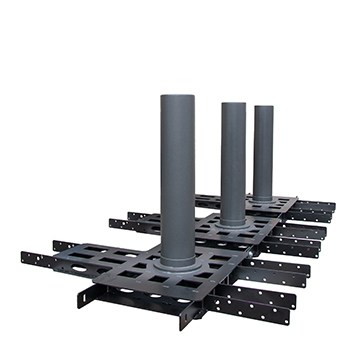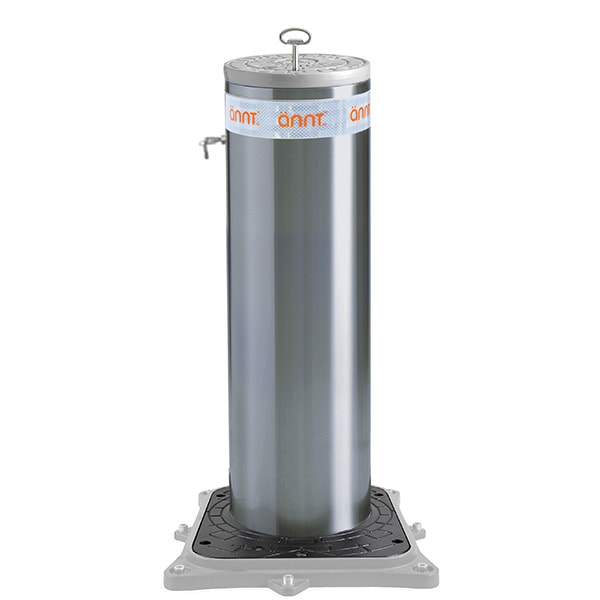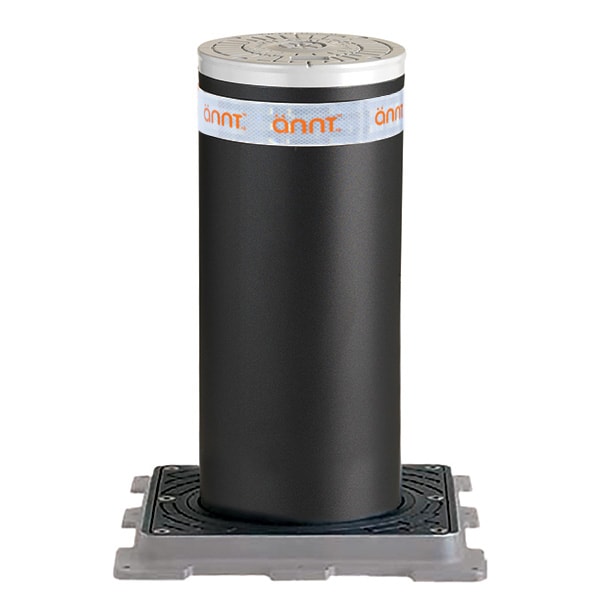Bollards are classified into different types based on their functions and operation. Today we are going to look at the main differences between four bollard classifications: fixed, removable, semi-automatic, and automatic.
Fixed bollards
Fixed bollards are permanently installed in the ground and cannot be moved or retracted. They are commonly used to control traffic flow, prevent unauthorized vehicle access, and enhance pedestrian safety. Fixed bollards are ideal for forming barriers around building entrances or parking lots and provide permanent collision protection and a visual deterrent for unwanted traffic.
Fixed bollards are available in both embedded and surface-mounted models, the former generally being more robust and the latter providing more flexibility with regards to usage. Fixed bollards are typically made of concrete, steel, stainless steel, cast iron, even high-density polyethylene (HDPE) or other durable plastics. The material used is based on their intended application, desired aesthetics, and the level of security required.

Removable bollards
Removable bollards can be easily removed from their installed position and then reinstalled when needed. They are ideal for locations with changing access needs and can be used to provide emergency access to police vehicles or ambulances, for event management (festivals, concerts, etc.), to control access to parking lots or loading areas, and to restrict access to areas that are only closed during certain seasons. Removable bollards are typically installed in a sleeve or socket embedded in the ground. Since removable bollards need to be installed and removed manually, their use is more labor-intensive and time-consuming than other types of bollards. Removable bollards are also lighter and may not provide the same level of resistance against vehicle impacts. Furthermore, there is also a risk of unauthorized removal, potentially enabling unauthorized vehicle access.

Semi-automatic Bollards
Semi-automatic bollards are more convenient than fixed bollards as they can be retracted to allow authorized vehicle access and raised to prevent unauthorized entry. They require human intervention to be raised or lowered, usually with a key switch.. The advantage of using semi-automatic bollards is that they provide flexibility in controlling vehicle access. They are often used in areas where occasional access restriction is required, such as pedestrian zones, restricted parking areas, or sensitive locations like government buildings, airports, or embassies. Thanks to their easy installation process and low maintenance requirements, semi-automatic bollard systems are becoming increasingly popular among facilities managers who value reliability and convenience at lower price points.

Automatic bollards
Automatic bollards are fully motorized and can be controlled remotely or automatically through various access control systems. They are designed to be raised or lowered automatically based on predetermined triggers, such as proximity sensors, vehicle detection systems, or access cards. Opening and closing times can be programmed. Automatic bollards offer the highest level of convenience and security, as they eliminate the need for manual operation. They are commonly used in high-security areas, government facilities, and places where frequent vehicle access control is required. Automatic bollards generally have a higher price point than other types of bollards due to the additional complexity and technology involved in their design, operation and maintenance.

Contact
ANNT offers a comprehensive array of top-quality fixed, removable, semi-automatic, and automatic bollards. Click here to chat with a member of ANNT’s experienced team about which type of bollard is best for your location.
